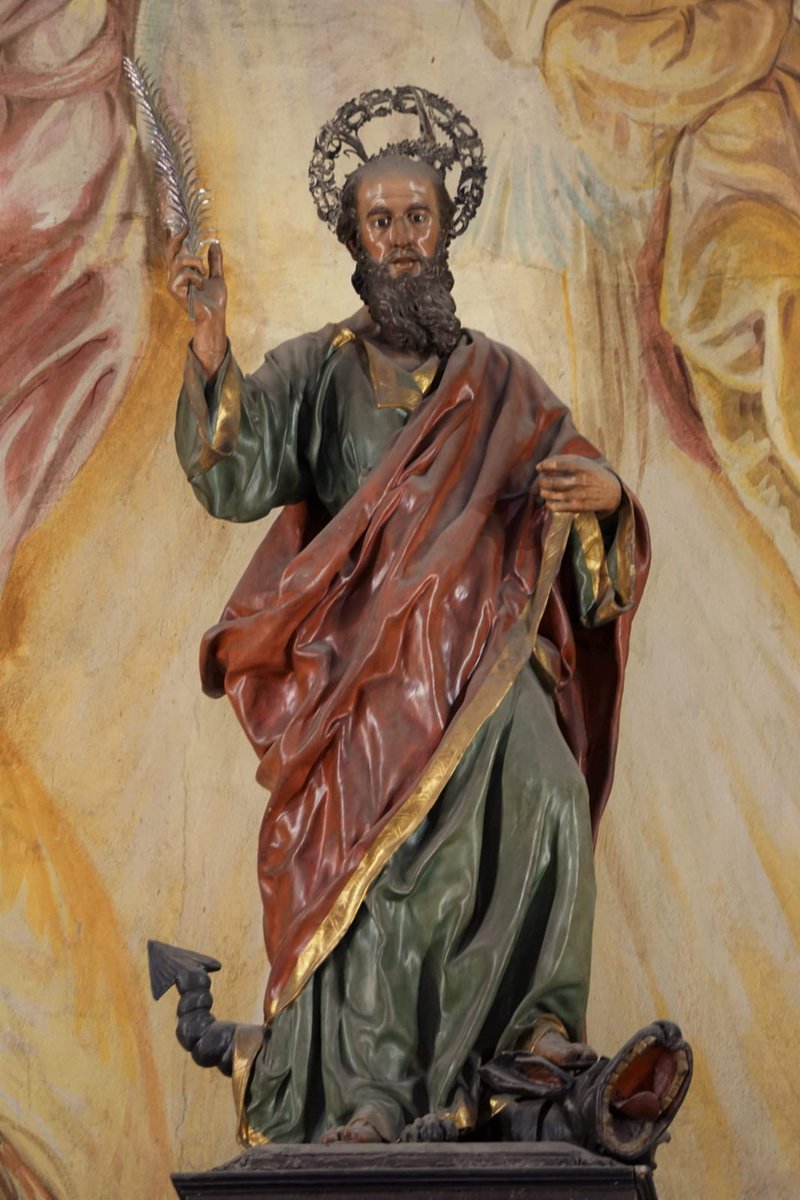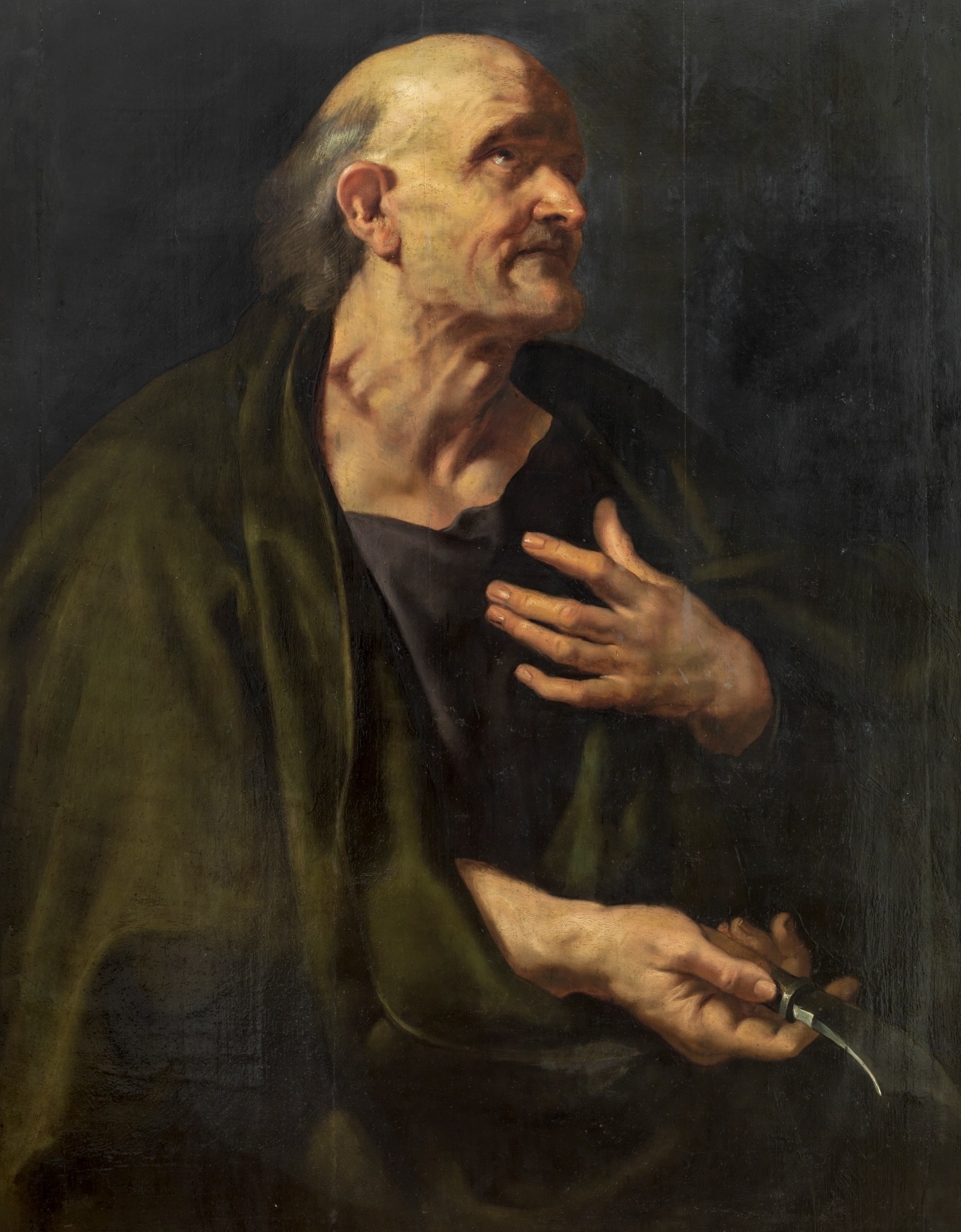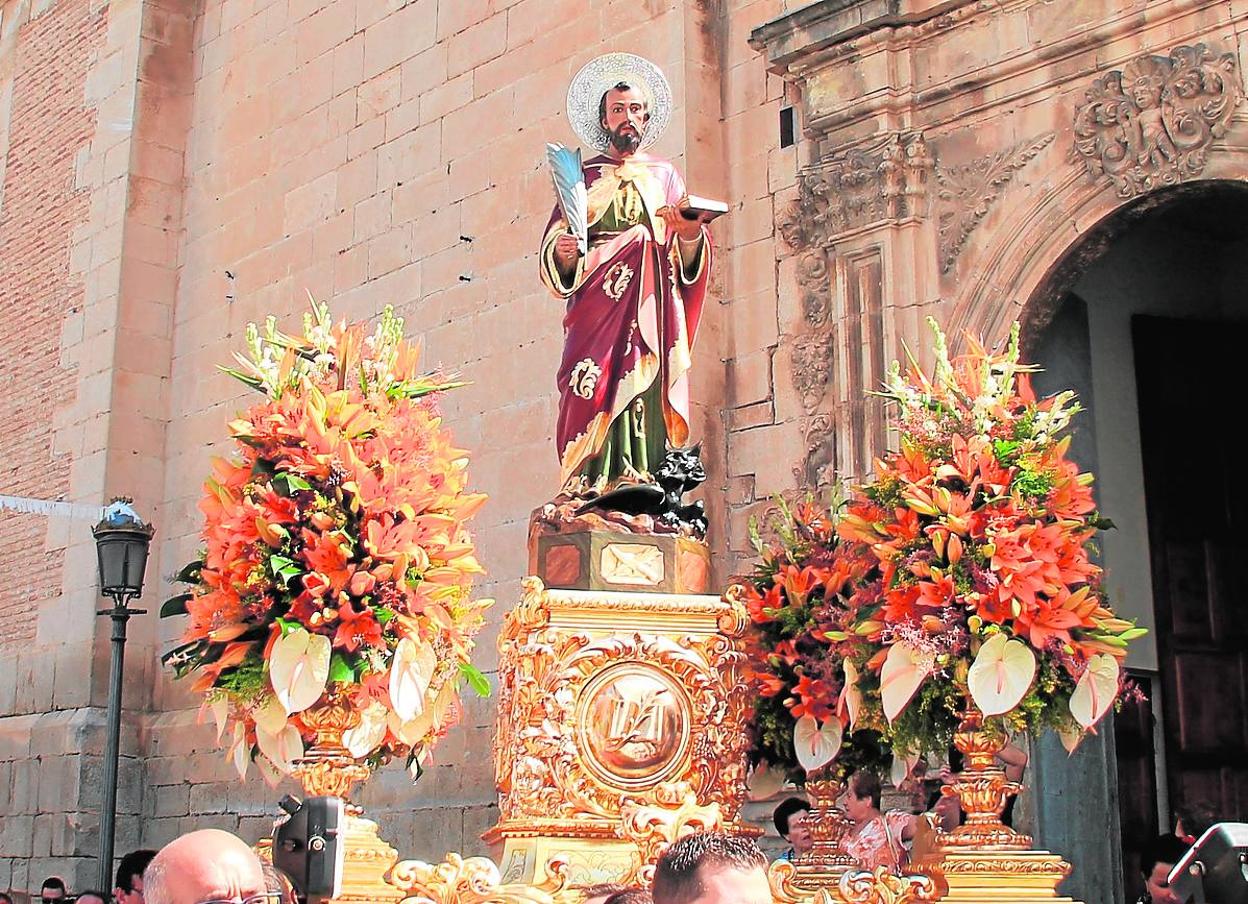In this article you will be able to know everything related to Saint Bartholomew, one of the twelve apostles who followed and supported the ideas of the son of God, Jesus Christ. And although there are not many bibliographic details about it, in the following paragraphs you will be able to obtain the most complete information there is.

Saint Bartholomew – Biblical Sources
According to the biblical writings of John, Saint Bartholomew was one of the disciples to whom the Messiah arose in the ocean of Tiberias after his resurrection. History tells us that Philip informed him that he had found the son of the Most High and that he had come from Nazareth, to which he replied: "Something good can come from Nazareth." It is necessary to highlight an important detail of the above, and that is that this is an important indicator of Judaism expectant about the coming of the Messiah.
In his first meeting with the great messenger of the Lord, the two have an interesting conversation where the saint tells him: "Here is a true Israelite, in whom there is no deceit." "How is it that you know me?". Then, the Son of the Supreme replied: "Before Philip called you, I saw you while you were under the fig tree." Without a doubt, this was a fundamental turning point in his life.
After an answer so incredible that it was not expected, Saint Bartholomew makes the following creed: «Rabbi, you are the Son of God; you are the King of Israel.” Continuing with the biblical section of this interesting character, it should be noted that John is the only one who mentions him.
Whereas, in the writings of Mark, Matthew, and Luke, Philip's name is followed by the saint's name, tradition has assimilated Bartholomew and Nathaniel as one. Therefore, it is not uncommon for some writings to have one or both names to refer to it. In turn, according to the Acts of the Apostles, Saint Bartholomew was one of those who witnessed the ascension of the Messiah.
iconography of San Bartolome
Visual representations of Saint Bartholomew over the decades and centuries have changed little. For example, it is always very common to find the representation of the saint during his death, on a shelf or tied to a tree. In turn, it is possible to find images with him performing miracles, as is the case of the revival of King Polymio's children and when his daughter possessed by demons is released.
In fact, it is very common to find him with a large knife, relating it to his horrendous death, which is why he is the patron saint of tanners. Also related to his martyrdom, he is sometimes seen flayed, showing the skin attached to his arm like a garment. During the Baroque era, representations generally refer to his apostle status, in a long white robe, doing the sacred writings and displaying the knife.
He is also depicted holding a demon on a chain. The origin of this symbol can be twofold: the first, St. Bartholomew, demands that the risen Christ show the wicked "Belial", after showing him, Jesus indicates: "Step on the neck and ask". And the second, according to tradition, expelled a demon, called "Astaroth", from a temple where he lived inside a statue. He demonstrated the ineffectiveness of the statue, which was intended to heal, cast out the devil, and consecrate the temple.
When it comes to his physiognomy, it is represented by Berith's description of the sick and this is how it is told in The Golden Legend of Santiago de la Vorágine. He is a man of average height, with curly black hair, fair skin, large eyes, a straight and well-proportioned nose, a thick beard, and a slightly grayish appearance.
Martyrdom de San Bartolome
His final destiny is attributed to an Armenian king, whose brother had been converted to Christianity by the influence of Saint Bartholomew. Like the priests of the pagan temples, who were running out of followers, they protested against Astyages for the Christian work. Astyages called him and ordered him to worship the idols of him. After Bartholomew's refusal, the king ordered that he be flayed alive in his presence until he renounced his God or died.
Mortal remains
The 507th-century writer from Constantinople, Theodore Lector, stated that around the year XNUMX the emperor Anastasius gave the relics (remains of the saint) to the recently restored city of Dura-Europos. Gregory of Tours mentioned the existence of relics of him on Lipari, a small island off the coast of Sicily, in the part of Italy controlled by Constantinople, where his skin and many bones can be found in the Cathedral of Saint Bartholomew. , the Apostle.
Over time, the church inherited an old pagan medical center and thanks to this, the saint's name became associated with medicine and hospitals. Some pieces of Bartholomew's skull were transferred to Frankfurt Cathedral, while an arm is worshiped in Canterbury Cathedral today. Emperor Otto II brought the bones of Saint Bartholomew in 983 to Rome and they rest in the church of Saint Bartholomew on the island of Tiber.
Festivity
It is part of the many saints that are worshiped by the different branches of Christianity, therefore, according to the different calendars that are used, its date may vary according to one region with another. In the case of Western Christians, his feast day is August 24; for the Orientals, June 11; finally, the Armenians commemorate it on December 8.
Patronage
There are many countries, regions, cities and towns that consider Saint Bartholomew as their main patron. Most of them will be found in Spain, being cities such as: Aldeanueva de San Bartolomé (Toledo), Marrupe (Toledo), La Almarcha (La Cuenca), Rociana del Condado (Andalusia). Even so, countries like Mexico in the American continent have some communities that consider it a patron, as is the case of: Atlacholoaya, Xochitepec and Morelos.
Supposed preaching in the East
There are two old testimonies of the mission of San Bartolomé in India. These are from Eusebius of Caesarea and Saint Jerome in the fourth century. Both refer to this tradition when they speak of Pantanu's reported visit to India during the second century. Several modern studies claim that the Bombay region on the Konkan coast may have been known as the possible area for Bartholomew's activities. A book entitled "Martyrdom of Bartholomew" says that he was martyred in India.
These texts describe two kings named Polyamus and Astriyagis. Around the year 55, King Pulaimi ruled near Kalyan. According to the texts, the saint was killed by decapitation. It is also claimed that his skin was removed and he was hung upside down alive. He is believed to have been killed there on August 24. He was only 50 years old.
Another of the stories told about these preaching trips to the east of the world was when, together with his companion, the apostle Judas "Tadeo", they arrived in Armenia. In fact, he mentions a lot that Saint Bartholomew was the main promoter of the religion in that place in the first century. Therefore, both saints are considered the patron saints of the Armenian Apostolic Church.
Miracle attributed to Saint Bartholomew
Finally, we can mention that the saint performed more miracles after his death than when he was alive. One of the best told miracle stories is when, in World War II, the fascist regime looked for ways to finance his activities and was ordered to take the silver statue of Saint Bartholomew and melt it down.
The statue was weighed and found only a few grams, so it was returned to its place in the Cathedral of Lipari. In fact, the statue is made of many pounds of silver and it is considered a miracle that it has lost weight.
If you liked this article about San Bartolomé, we recommend that you review the following interesting topics:


